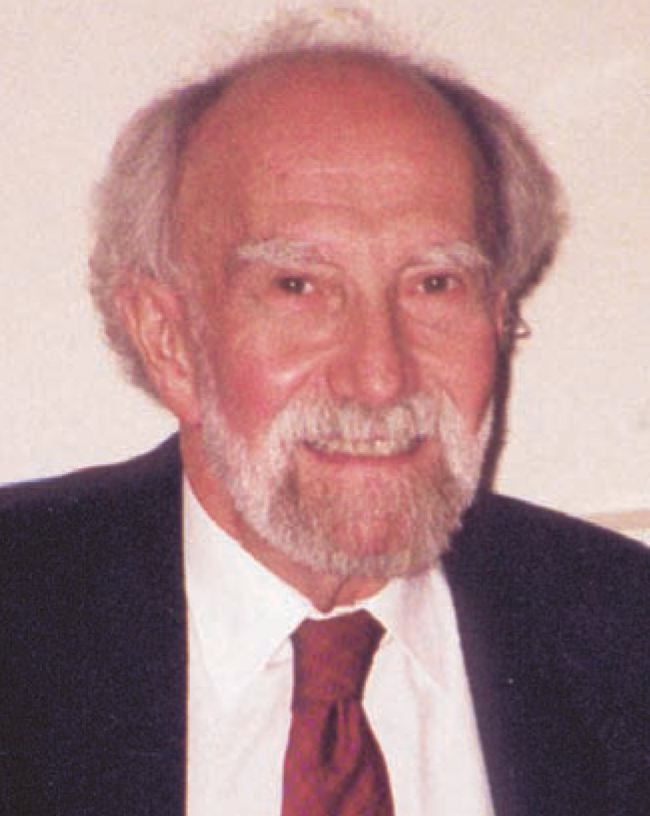Joseph Fine
DOI: 10.1063/1.1712510
Joseph Fine, a NIST physicist who was best known for his work in the interaction of energetic ions with surfaces, died on 11 January 2003 in Silver Spring, Maryland, after a long struggle with cancer.
Fine was born in Montreal, Canada, on 7 August 1931; his family emigrated to the US when he was four years old. His interest in physics bloomed early, and he won first prize for his science fair project in the Georgia Science Talent Search. Fine received his BS (1953) and MS (1955), both in physics, from Emory University. In 1958, after having served two years in the US Army, he joined the National Bureau of Standards (now NIST) in Washington, DC. His initial work was in the free radicals program. With the encouragement of his boss, Milton Scheer, he pursued a PhD in theoretical physics at the Catholic University of America, and received his doctorate in 1974 under Tomoyasu Tanaka. His thesis, on two-electron systems and the formation of positive and negative ion states, inspired an interest in ion interactions. He pursued that interest experimentally at NBS/NIST for the rest of his career, first in the physical chemistry division and later in the surface science division.
Fine began investigating ion scattering from surfaces at a time when very little was understood about the physics of high-energy sputtering. He studied the mechanism of surface roughening that resulted from ion bombardment and determined the rate at which diffusion was enhanced by the creation of long-lived defects. Having obtained the deexcitation spectra of sputtered metal atoms from their Auger emission, he discovered that many of the atoms remained excited long after leaving the surface. With several collaborators, he also studied the continuum spectrum of electrons produced as a result of ion bombardment.
Later, Fine became interested in the difference between ion interactions with metals and those with ionic crystals, particularly the alkali halides. He and his coworkers discovered that unusual features in the electron spectra of ion-bombarded halides were the result of a complex sequence of lattice collisions and electron transfer. The resulting atoms left in auto-ionizing states account for a wide variety of surface chemical reactions, dissociation, and defect production.
In 1986, Fine introduced the first NBS/NIST standard reference materials for applications in surface analysis. That effort has had a lasting impact on thin-film technology. A series of papers in which he characterized those multilayer materials is widely cited in a broad range of studies on secondary ion mass spectroscopy, interface degradation by ion bombardment, and sputter depth profiling. Following the establishment of the American Society for Testing and Materials committee on surface science in 1976, he chaired the ASTM’s standard reference materials subcommittee for many years.
A careful experimenter who excelled in designing instruments, Fine developed a laser resonance fluorescence system sensitive enough to detect the atoms desorbed from surface layers at room temperature. With Denes Marton, he invented an optical scanning scattering microscope that won an R&D 100 Award in 1990. For his achievements in surface science and in standards, he was awarded the US Department of Commerce’s Bronze Medal (1982) and Silver Medal (1986).
Joe’s love of physics was infectious and cosmopolitan. He supervised the theses of several graduate students, and a large number of postdocs and guest workers from his overseas collaborations profited from passing through his laboratory. His enthusiasm spilled over into other activities such as ultra-faithful stereo sound reproduction and classic cars. He owned a Ferrari and a Bugatti, and visitors to his home were always delighted to discover a famous Formula I race car in the family room. Joe is remembered by his colleagues for his warmth, conviviality, and generosity of spirit, both in the workplace and at meetings around the world.

Joseph Fine

More about the Authors
Terrence Jach. National Institute of Standards and Technology, Gaithersburg, Maryland, US .
Cedric Powell. National Institute of Standards and Technology, Gaithersburg, Maryland, US .
